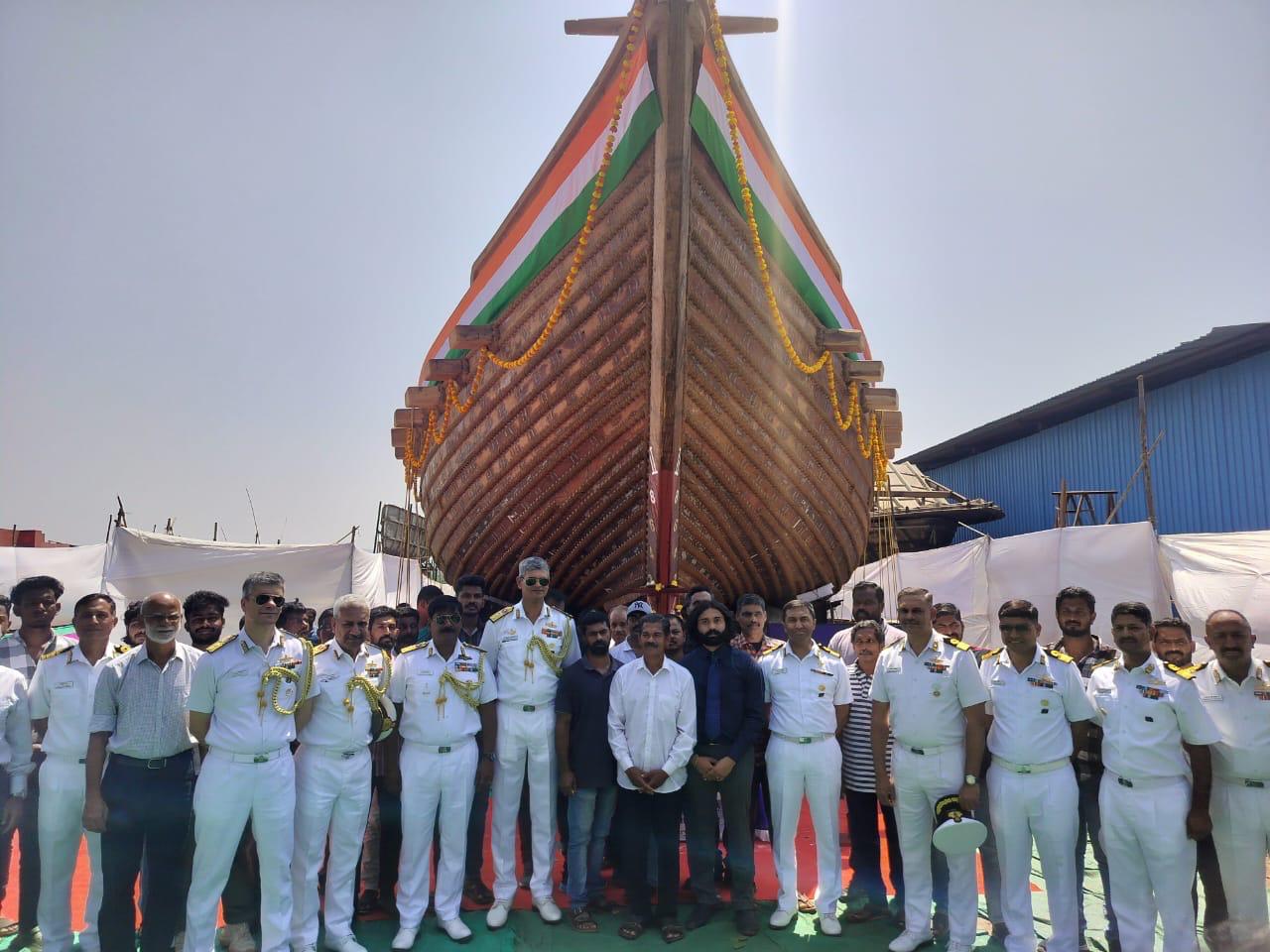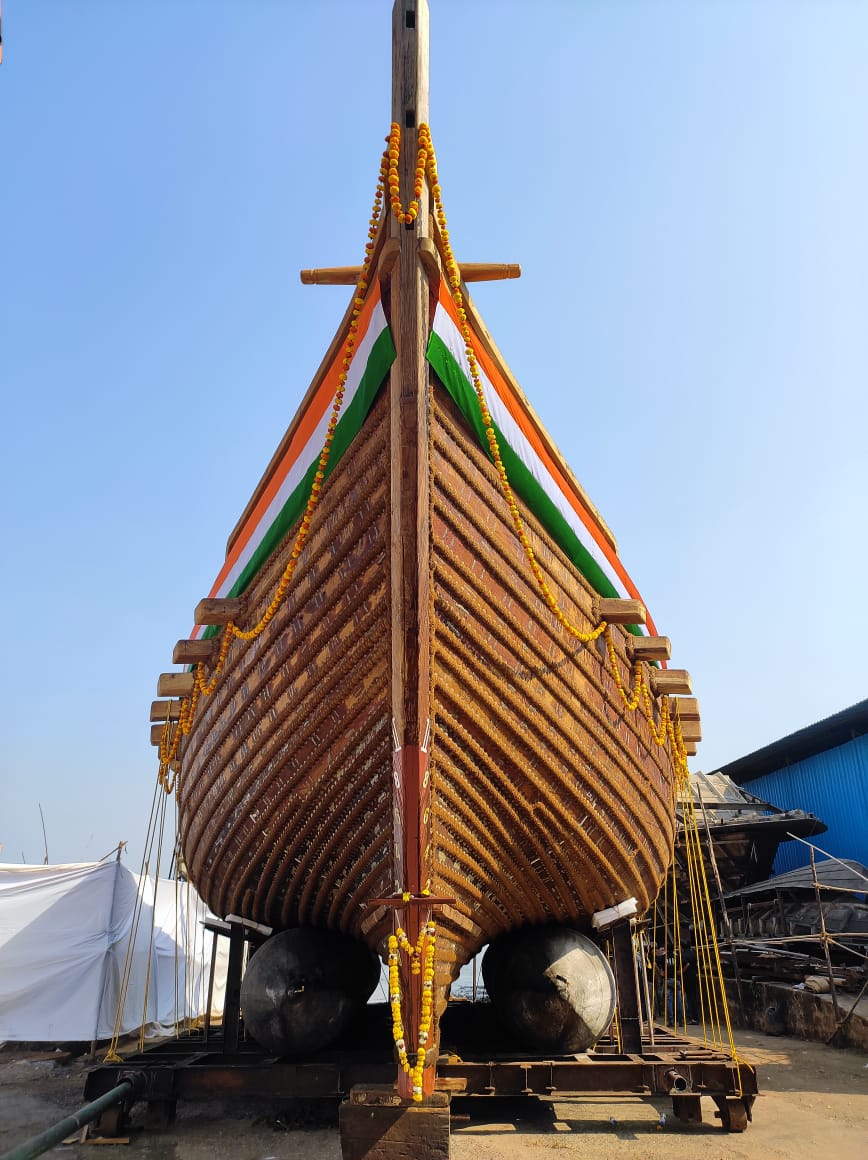Indian Navy to induct Ancient style Stitched Ship; Maiden Voyage to be from Gujarat to Oman
May 20, 2025
New Delhi: The Ministry of Defence today announced that the Indian Navy will induct and unveil the name of the ancient stitched ship during a ceremonial event on 21 May 2025 at Naval Base, Karwar.
Post induction, the project will enter its second important phase, where the Indian Navy will undertake the ambitious challenge of sailing this vessel along traditional maritime trade routes, reviving the spirit of ancient Indian seafaring. Preparations for the vessel’s maiden transoceanic voyage from Gujarat to Oman are already underway.
According to the official release, the Minister of Culture, Gajendra Singh Shekhawat, will preside over the ceremony as the Chief Guest, formally marking the induction of the ship into the Indian Navy.
The stitched ship is a recreation of a 5th-century CE vessel, inspired by a painting from the Ajanta Caves. The project was formally initiated through a tripartite agreement signed in July 2023 between the Ministry of Culture, the Indian Navy, and M/s Hodi Innovations, with funding from the Ministry of Culture. The keel laying of the stitched ship took place on 12 September 2023. The construction was carried out entirely using traditional methods and raw materials by artisans from Kerala, led by master shipwright Babu Sankaran, who executed thousands of hand-stitched joints. The ship was launched in February 2025 at M/s Hodi Shipyard, Goa.

Every aspect of the ship had to balance historical authenticity with seaworthiness, leading to design choices that were both innovative and true to the maritime traditions of ancient India. The combination of a stitched hull, square sails, wooden spars, and traditional steering mechanisms makes the vessel unlike any ship currently in naval service anywhere in the world. The successful construction of the ancient stitched ship represents the completion of the first and most formidable phase, bringing to life a fully functional sea-going vessel from an artistic depiction.
The completion of the stitched ship construction not only reaffirms India’s rich shipbuilding legacy but also reflects the Indian Navy’s commitment to preserving and operationalising the living traditions of India’s maritime heritage.
Recent Stories
- PM Modi proposes Thiru CP Radhakrishnan Ji's nomination for the Vice President
- India operates 24 nuclear power reactors with 8,180 MW capacity: Centre
- Closure of Tapi Bridge on Ahmedabad–Mumbai Highway Extended till Aug 20
- Pakistani Mohalla in Surat renamed to Hindustani Mohalla
- Multiple rounds of heavy rains likely in Saurashtra, Kutch, during 16-23 August: Weather analyst
- NHAI Rolls Out FASTag Annual Pass; List of Eligible Toll Plazas in Gujarat
- PM Modi announces Mission Sudarshan Chakra; aims to boost national security shield by 2035
